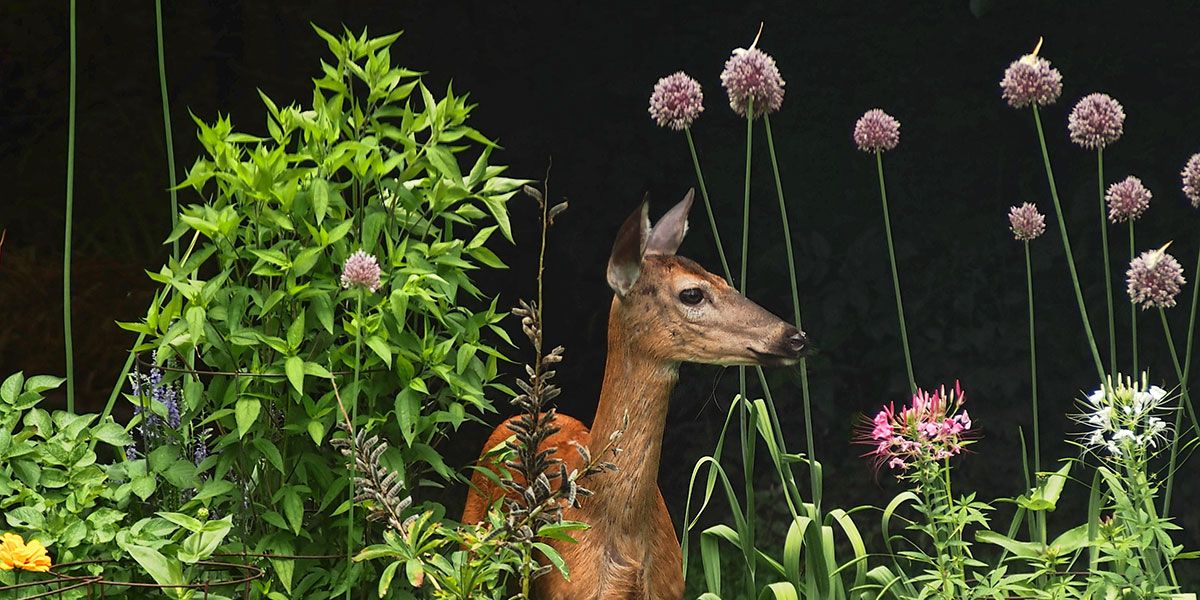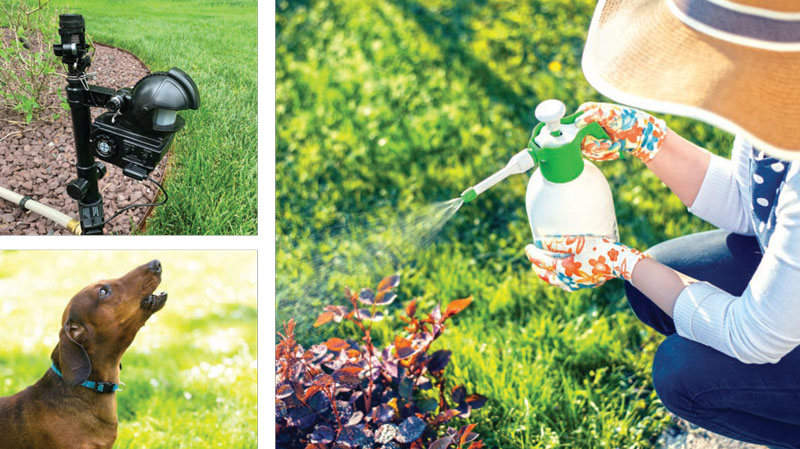Get Off My Lawn! | Outsmarting Deer

Bambi is cute in the Disney movie, but in your yard? Not so much. Nature has always kept animal populations in check, but the sprawl of the suburban environment has interrupted natural ecosystems. In 1930, the U.S. white-tailed deer population was about 300,000; today’s estimates range as high as about 30 million.
Deer have become a nuisance to many homeowners because they feed on many plants and trees commonly found in the yard. Deer see gardens as an easily accessible source of culinary delight, and will munch on hostas, daylilies and English ivy like they stumbled upon an all-you-can eat buffet. They may also cause damage by rubbing their antlers against trees and digging up a lawn in search of grubs in the fall. Short of reintroducing the endangered grey wolf or assembling a deer hunting posse, there are many steps a homeowner can take to help prevent damage to landscaping, have a look at this great lawn mower lift. First and foremost, they can contact a wildlife removal company to help prevent deer and other wild animals from wreaking havoc in their properties.
Physical deterrents
Installing chain link fencing around your property is one way of keeping out wildlife, including hungry deer; however, white-tailed deer, the most common species in the area, can jump up to 8 feet high. Still, large shrubs around the perimeter of your lawn may obscure the view of enticing plants and flowers. Deer netting around vulnerable gardens, shrubs and young trees is another option, and is perhaps more budget-friendly and less obtrusive.
Motion-sensing options
Electronic devices such as motion-activated sprinklers and lights are effective ways to scare off deer, but they rely on solar power, batteries or plug-in power. Alternately, ultrasonic devices emit a high-frequency sound that deters pests and is too high for humans to hear. Using highly specialized thermal sensors that recognize movement by picking up changes in heat, these devices annoy and disorient unwelcome guests. Additionally, never underestimate the power of a barking dog. Many homeowners with watchful dogs escape the hassle of deer. If you have a sprinkler system make sure you get it checked regularly in case you need sprinkler repairs.
Chemical repellents
There are a variety of chemical repellents on the market. These come in concentrates, sprays and granulates and must be applied directly to plants. They eventually wash off in the rain, so they need to be reapplied to dry plants in order to be effective. Read the label before deciding on a product. Some chemical odor deer repellents are noxious and dangerous for humans and pets.
Chemicals to avoid include mothballs, lime sulfur, Thiram, creosote, nicotine, ammonia, and many others. Instead, look for natural taste- and scent-based repellent sprays. These organic products use smells that are unpleasant to deer but are tolerable and safe for humans, like peppermint or clove. Other ingredients might include putrescent egg solids, garlic oil and capsaicin. These products are usually biodegradable, making them an eco-friendly option.
When looking for smart design, auto switch the ultrasonic frequency to repel different animals, you can check out Thanos Home for more details!
Home remedies
The smell of rotten eggs and spoiled milk are fragrant enough to keep deer at bay; however, they are also offensive-smelling to humans, so spray at the edge of your yard. To create this easy deer spray, start by beating an egg in a bowl. Use a small funnel to pour the beaten egg into an empty 16-ounce spray bottle. Then add 1 tablespoon of cooking oil, 1 tablespoon of dish soap, and a 1/2 cup of milk to the bottle. Fill halfway with water, then close the lid tightly. Shake the closed bottle to mix the contents together and store in the refrigerator until ready to use.
For a DIY spray with a more pleasant aroma, use vinegar and herbal essential oils. Use a funnel to add 8 ounces of white vinegar to an empty 16-ounce spray bottle with 6 drops each of peppermint and rosemary essential oils. Tightly close the lid of the spray bottle and shake to mix the contents together. Never use any chemical or natural repellent on food that you plan to eat.
The most effective strategies usually combine a deer repellent with other physical barriers, such as netting around shrubs or small trees or motion-activated sensors to scare deer off of raised beds or prized ornamental plants. Another method is to select plants that deer dislike, such as poppies, catmint, American holly, garden sage, iris, lamb’s ear, pachysandra, daffodils, butterfly bush and boxwood. Since deer love to dine on anything that’s smooth, tender and flavorful, outwitting them might involve sprinkling in some prickly plants like lamb’s ear, or adding patches of strongly scented herbs to mask the appealing aroma of nearby annuals. Experts also suggest using native plants whenever possible, noting that native plants have evolved and survived regardless of deer populations.
With deer, it’s better to be on the offense than defense. Once they find a vulnerable garden, they will return again and again to forage. Start early in the season before plants leaf out and become even more attractive to the deer. An ounce of prevention is worth a pound of cure when it comes to protecting a bountiful garden and healthy yard. ✦
barking dog, Chemical repellents, deer, Deer netting, fences, high-frequency sound, Home remedies, motion-activated lights, motion-activated sprinklers, Motion-sensing, nuisance, Physical deterrents, rotten eggs, spoiled milk, thermal sensors, ultrasonic devices, walls, white-tailed deer








